What does AR mean in construction?
Augmented reality is a type of technology that allows a user to overlay digital elements like 3D objects or images onto the physical environment via their smartphone or tablet. Civil engineers and construction workers can use augmented reality for constructing buildings with better visualization and safer workflows. Other applications of construction AR include:
Design and visualization
Construction processes
Monitoring and maintenance
Training
Quality control
How are AR and VR used in construction?
Virtual reality (VR) in construction involves the use of advanced computer graphics and hardware to create and experience 3D, virtual layouts. There are several benefits to using VR in construction, and the future looks promising as this technology advances and becomes more accessible to everyone.
Uses of VR
- Visualise digital structures
- Explore and interact in 3D
- Simulate real-world scenarios in BIMs
- Train workers remotely
Benefits of VR
- Safer training environments
- Effective construction processes
- Faster collaboration
- Better planning and decision-making
How is augmented reality used in construction?
Construction companies use augmented reality to significantly boost the accuracy, efficiency, and safety of their building projects. Here's how industrial augmented reality applications come into play at different stages of construction.
Collaborate virtually in design and planning
As one of the augmented reality engineering applications, project managers can form virtual huddles with stakeholders, architects, and engineers to evaluate design blueprints. They can get a bird's eye view of the project right from the start and make informed decisions with minimal errors.
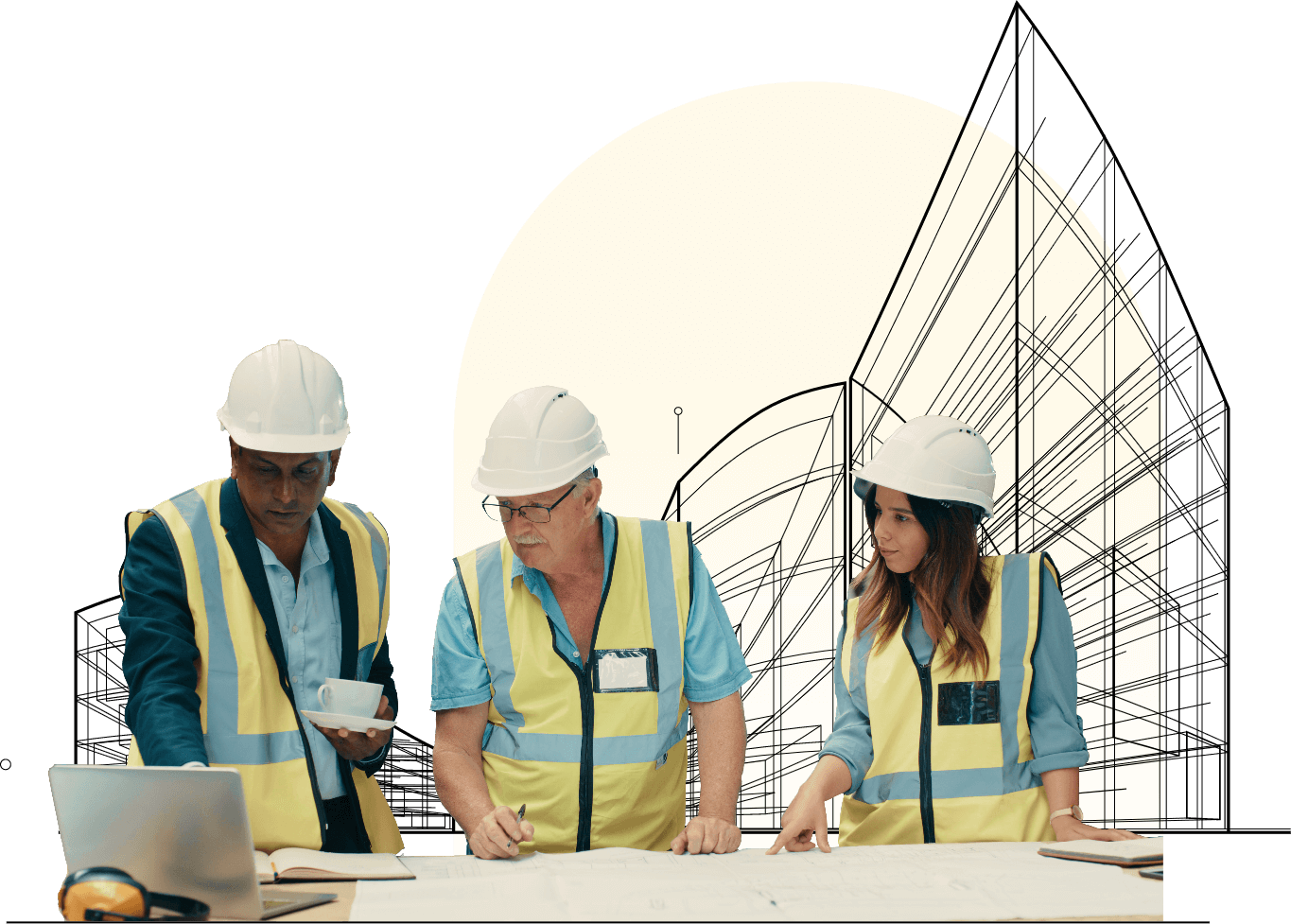
Monitor construction processes in real time
With Zoho Lens, construction superintendents who oversee many processes can use AR for construction site monitoring. They can check in virtually, organize augmented reality building maintenance with their crew, and provide onsite support by accessing the crew's smartphone camera.
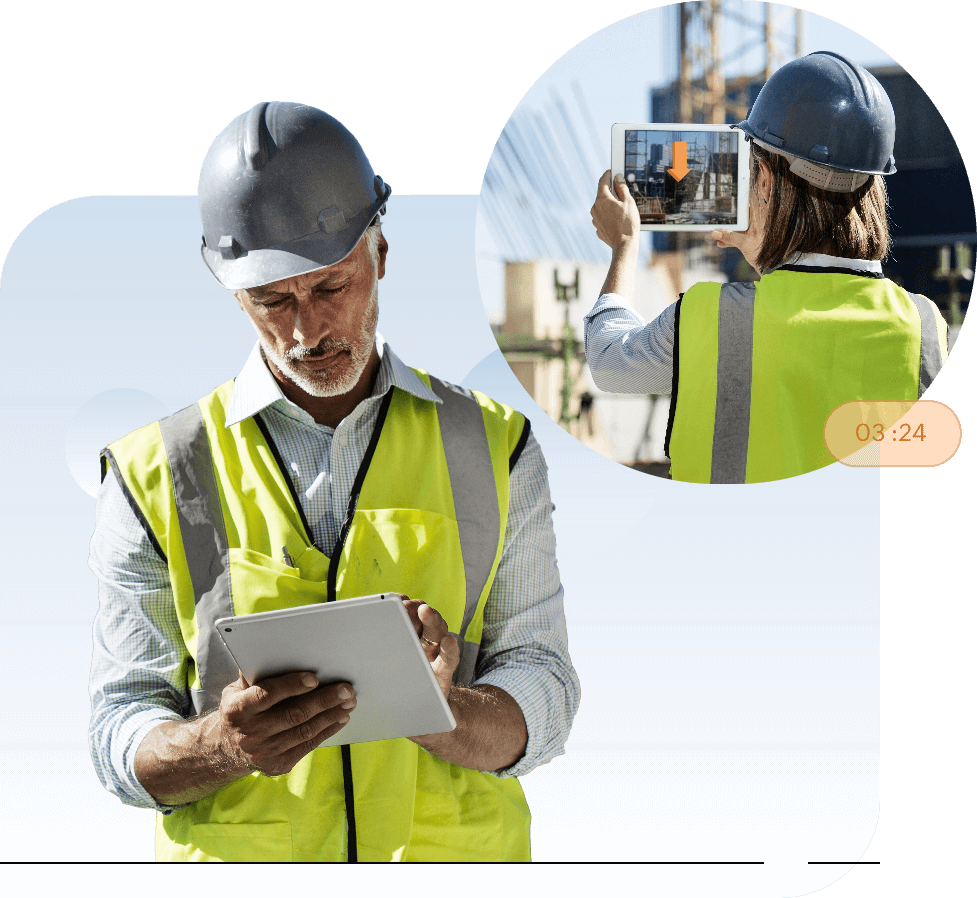
Conduct remote safety inspections
Along with using augmented reality for constructing buildings, safety officers can conduct a remote inspection to spot and document issues right from their desks. With Zoho Lens, they can substantially reduce travel times and cover more construction projects in a day.
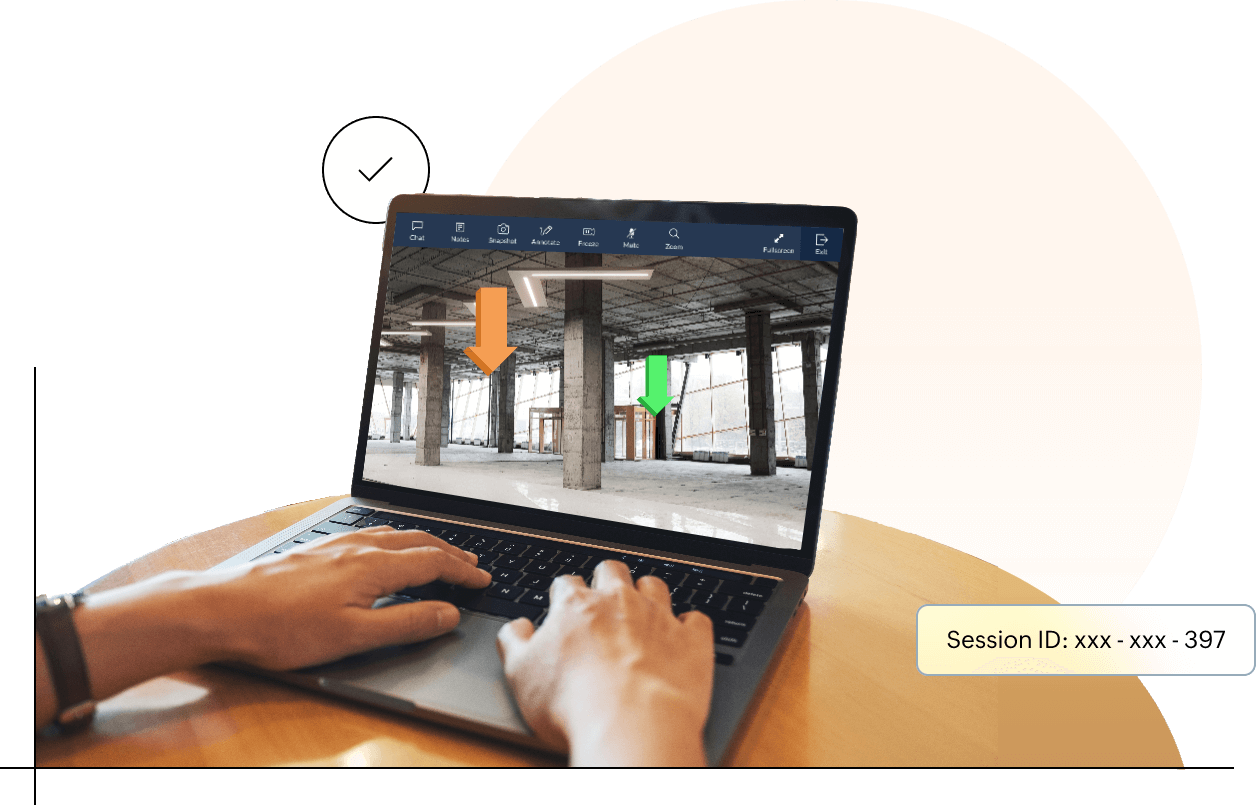
Provide an immersive training experience
AR technology in construction makes training sessions more interactive, engaging, and it also ensures safety. With virtual training sessions, managers can onboard and educate crew members on new safety procedures and equipment operations—no matter where they are.
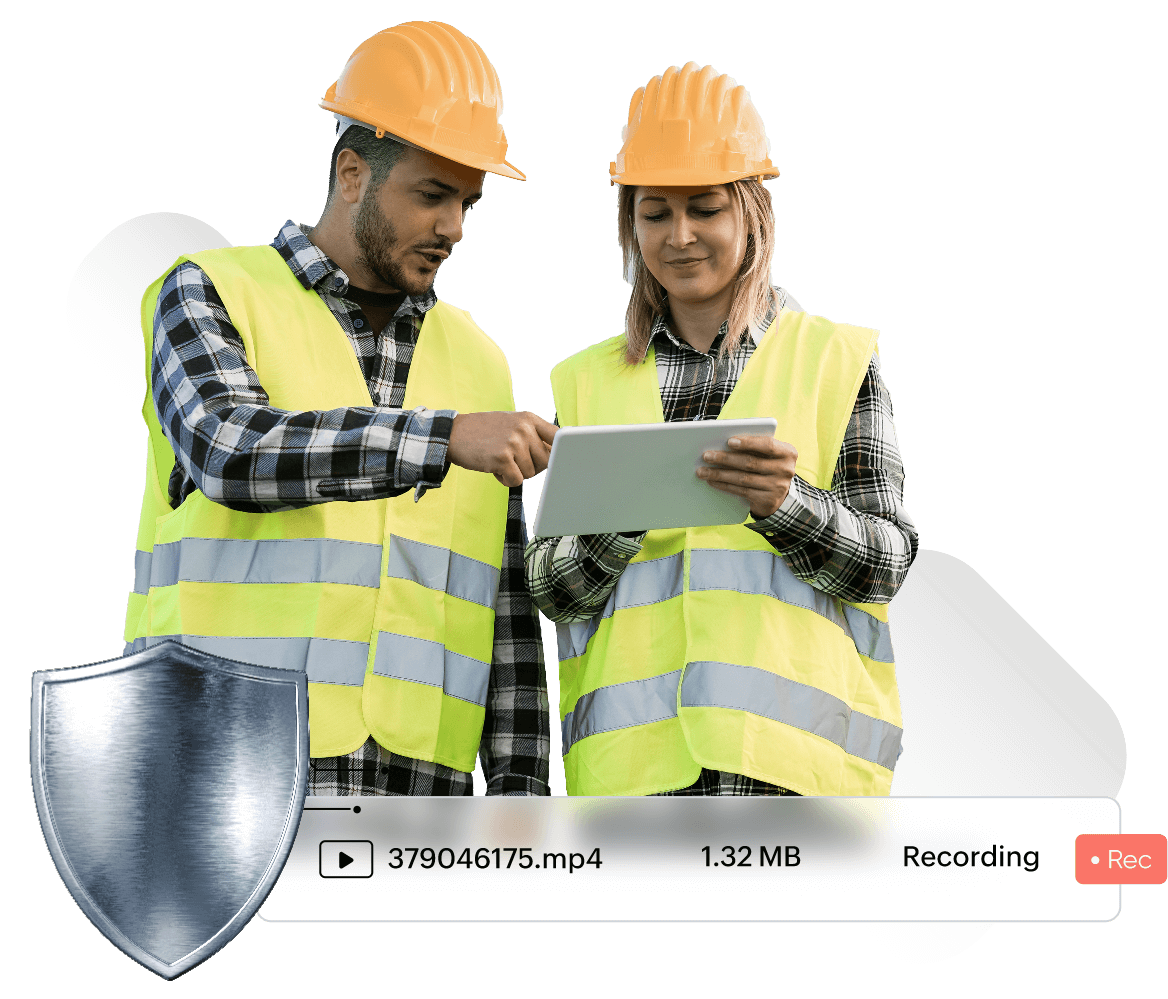
Challenges of virtual reality in construction
As advanced as it may be, the adoption of virtual reality in construction processes can pose certain challenges to the organization and its workforce.
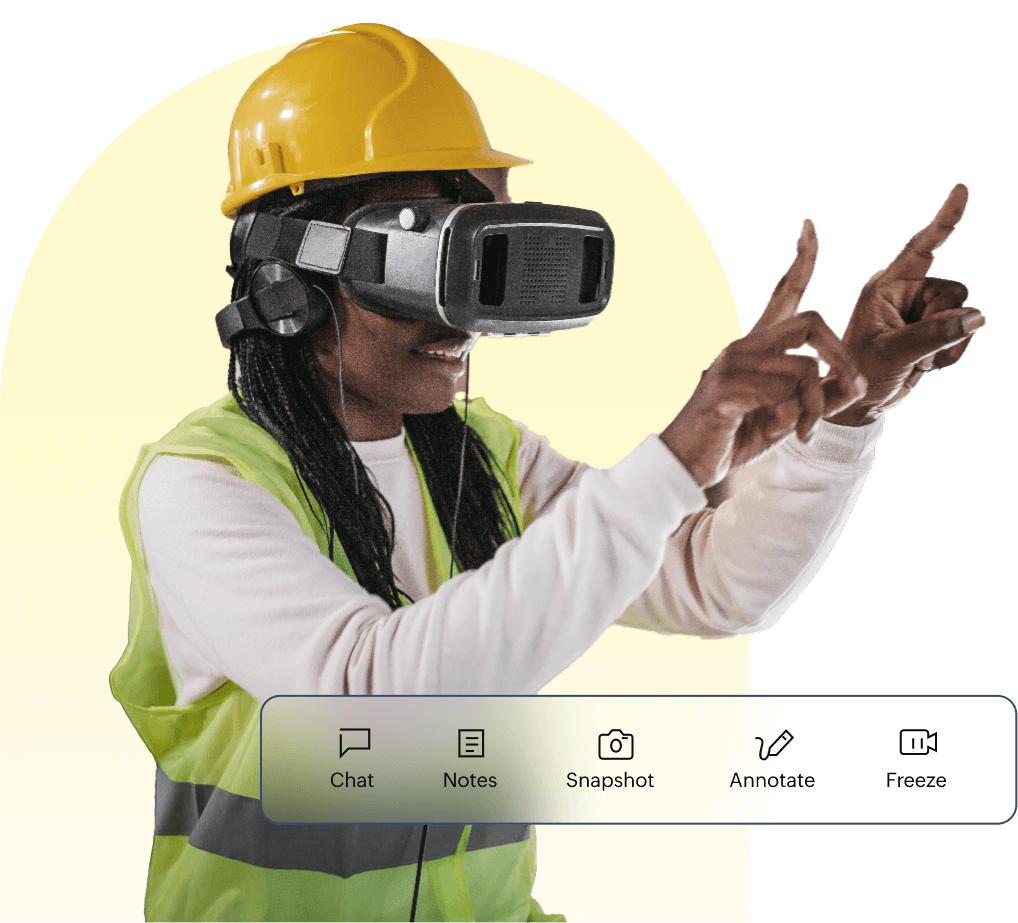
Technical limitations
VR requires three major components to function—high-powered systems and dedicated headsets (hardware), simulation (user content), and integration with existing software. It can be a labor-intensive and time-consuming process to get these components working and ready for regular use by the workforce.
Organizational limitations
Because construction sites are bound by numerous regulations like building quality, fair practices, and environmental protection, it can be challenging for organizations to adopt new technologies like VR while ensuring compliance to those regulations. For example, VR, being a fully immersive technology, can pose safety risks to construction workers, who need to be aware of their surroundings constantly.
The future of augmented reality in construction industry
The future of AR in civil engineering and construction will be shaped by emerging technologies and innovations such as AI-driven AR, more advanced hardware, and improved software solutions. With the scaling of AR capabilities, architects will be able to create highly detailed and interactive 3D models, allowing for virtual walkthroughs and better design assessments.
As the technology matures and becomes more affordable over the next decade, AR is expected to become a standard tool in construction, leading to more efficient, cost-effective, and safer construction practices.
Benefits of AR in construction
With Zoho Lens, the augmented reality construction app, you can enjoy these key benefits:
Enhanced collaboration
By providing a clear, immersive, and interactive view of the construction process, AR enables real-time discussions between stakeholders and remote teams. Clients can visualize the project better, point out design issues, and have experts address them on the spot, reducing the likelihood of miscommunication.
Improved resolution rates
Construction AR benefits the crew by reducing delays and improving their workflow efficiency. They can get remote visual assistance from the maintenance team to resolve inconsistencies in the electrical or plumbing systems without disrupting their other building processes.
Reduced travel time and cost
The true impact of augmented reality in civil engineering lies in transcending geographical distances at a minimal cost. Engineers can supervise multiple construction sites effectively and provide live instructions to the on-site crew from anywhere.
Improved safety
Construction sites are inherently risky environments to work in, considering the machinery involved, the electrical or chemical hazards present, and the nature of the work itself. AR retains the user's field of view while receiving digital instructions, ensuring safer training sessions and working conditions.
Accelerated project delivery
Augmented reality in civil engineering can streamline various construction processes and enhance overall efficiency. It enables clearer team communication, precise quality checks, economical issue resolutions, and swift inspections and approvals, which leads to faster project completion.
How does AR in construction field work?
Get Connected
Managers can start or schedule a remote session with the crew from any device. They can send an invite through SMS or email or send the join link directly.
See what your crew sees
Once the construction personnel joins the session, you can access their camera stream to view the construction process live.
Collaborate through text, voice chat, and AR tools
Managers can use text, voice chat, and AR annotations to analyze any issue in depth and help the crew in solving it.
Experience augmented reality in civil engineering with these key features
Below are just some of the many features in Zoho Lens that can help civil engineers improve their construction processes.
Frequently Asked Questions
Unlike virtual reality (VR), which requires special hardware for viewing computer-generated simulations, you don't need a specific device to experience augmented reality (AR). With Zoho Lens and a smartphone or tablet, construction workers and technicians can use AR in their construction processes for solving issues and collaborating with crews remotely.
AR is easy to use, widely available, and accessible on common devices, making it a cost-effective option for small and mid-size firms. Heavy capital investments in specialized equipment and focused training aren’t required when adopting AR technology for your construction processes. Augmented reality apps like Zoho Lens are user-friendly and easy on the budget while giving powerful collaboration tools, maximum security, and a comprehensive management interface.
AR surpasses the functionality of voice or video calls by bringing remote teams and on-site crews into a shared augmented space, where live, digital interactions are possible. Every interaction, whether it's an annotation or comment, can be seen by everyone in real time, and these digital elements remain fixed even if a user moves their camera elsewhere. All of these factors help in efficient communication between remote teams and enable them to provide precise guidance to on-site crews.
Yes, AR can help construction workers detect errors in real time. It overlays 3D models, digital blueprints or Building Information Modeling (BIM) data onto the physical construction work, which helps identify deviations or structural misalignments beforehand. Experts can connect to on-site workers for visual inspections and quality checks to flag issues and guide workers through the fix. AR helps agencies identify errors preemptively and deliver projects with minimal delays.
Managing multiple construction sites requires a collective system that helps you leverage AR technology across multiple devices while gathering document trails for audits or tracking progress. Zoho Lens, the augmented reality app for construction, is a scalable solution that agencies can use to monitor multiple sites, gather live data through remote assistance and inspections, create workflows, manage technicians, view reports on actions taken or sessions conducted, and integrate with existing software while experiencing industry-standard security of SSL and 256-bit AES protocols.
